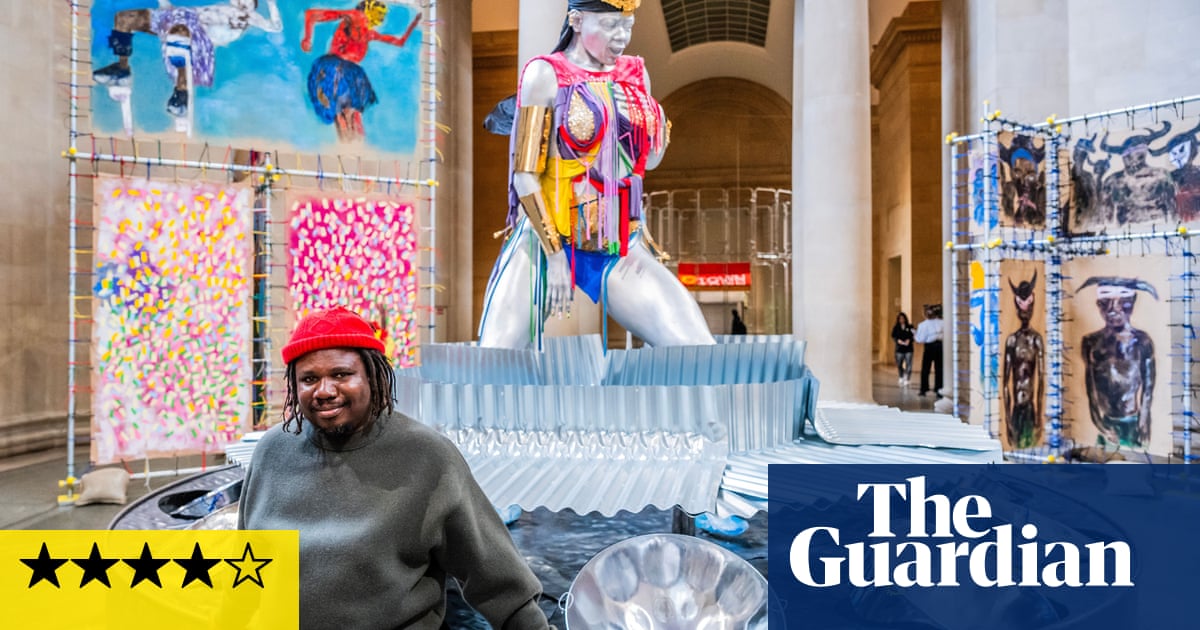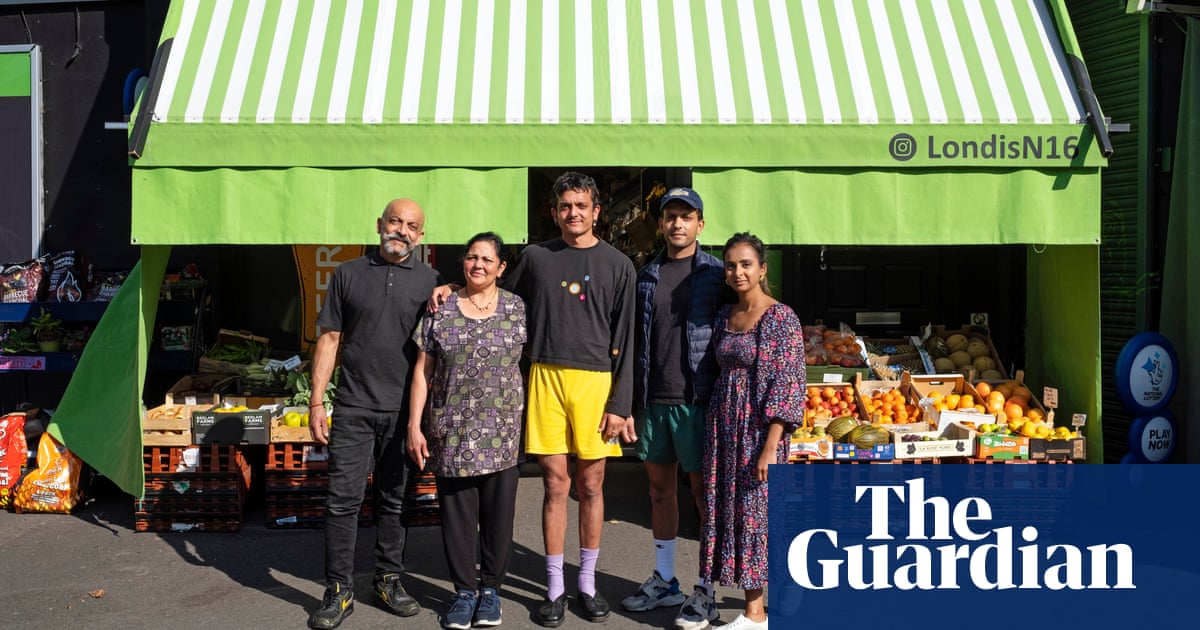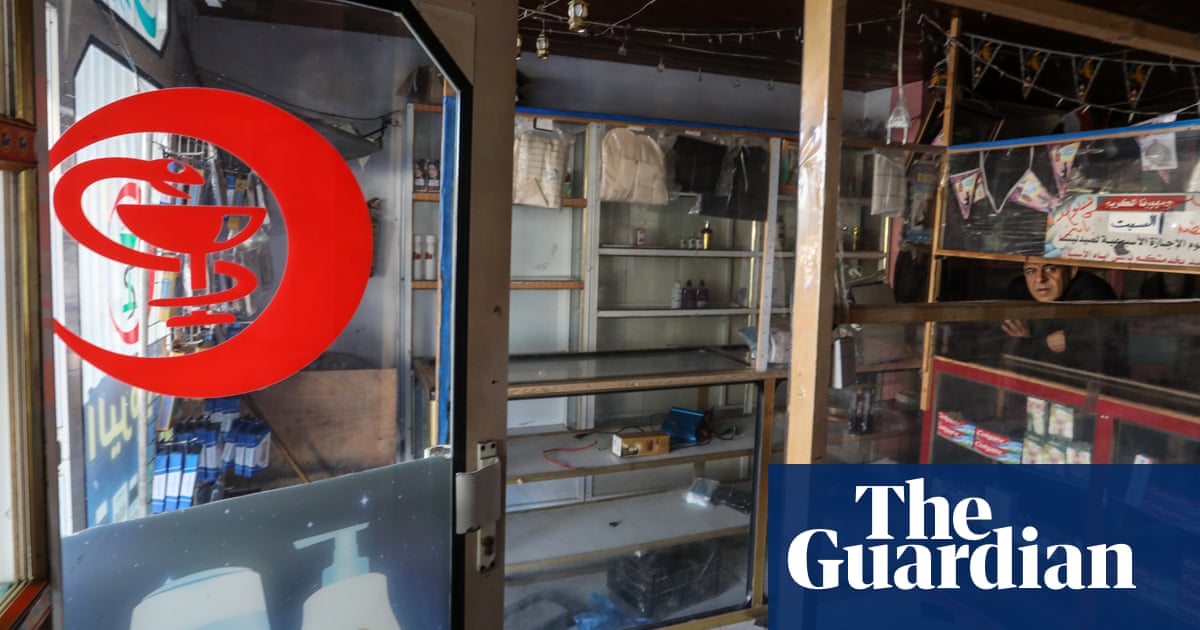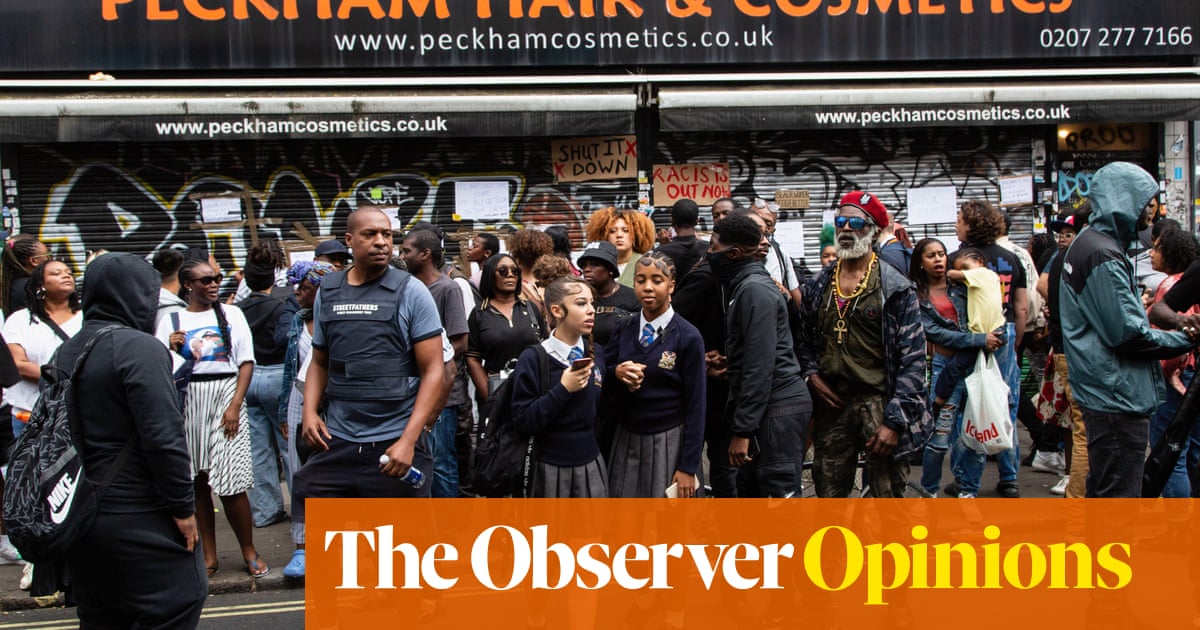
One of artist Alvaro Barrington’s earliest memories is of taking shelter in the “little shack in the countryside” where he lived with his grandmother in Grenada, with rain pounding the tin roof and music playing. Now that simple protective roof has inspired a huge minimalist sculpture – suspended sheets of corrugated metal – that stretches the length of Tate Britain’s lofty south Duveen gallery.
We meet beneath it, midway through the installation of Grace, Barrington’s huge new three-part work for the prestigious annual Tate Britain Commission. Soon, he says, there will be a soundscape of rainfall and original music created by pioneering experimental artists including Blood Orange’s Dev Hynes and Femi Adeyemi, founder of maverick London radio station NTS.
It is the first step in a journey through what Barrington calls “his internal landscape”, as shaped by Frederica, Samantha and Emelda, respectively his grandmother, sister figure and mother. “I wanted to explore what I do [as an artist] in relation to their labour,” he says. “My mom got pregnant at 17 and my grandmother took me in without judgment. My mother lived abroad and when she returned my grandmother found ways to show her she was loved. She covered the chairs in plastic, so the house never changed. It was her saying: ‘No matter what, you have a home.’”
Barrington joined his mother in New York when he was eight, living there until he came to London to study at the Slade School of Fine Art in his 30s. Since his graduation in 2017, his ascent has been rapid by any standards. Although he describes himself as a painter, he is known for expansive projects that escape the medium’s traditional bounds.
The first canvases one encounters at Tate Britain are his signature yarn paintings, where thread is stitched across the canvas to create scratchy colour explosions. “They come from the women in my family sewing and crocheting,” he says. “It’s how they dealt with art: making paintings by putting fabrics together.”
In stark contrast to this evocation of domestic space, the Duveen central rotunda explores women’s occupation of a very public stage. While we talk, an aluminium sculpture of a dancer in “pretty mas”, the feathers and bikini costumes inspired by Brazilian carnival, is being lowered into position by a forklift. This is based on Samantha, a “sister” the artist has known for three decades, dancing at Notting Hill carnival. “At art school, there was a lot of talk about public space [being dominated by] men,” he recalls. “Coming from the Caribbean that didn’t make sense to me. Millions of people attend carnival and it’s understood that if a woman is dancing by herself that’s her space.”
The statue is a beacon of bodily freedom and kinship, towering between the safety of the artist’s early childhood and his adolescent experiences in 1990s New York, which fuel the sobering reflections in the north gallery. Here, Barrington looks back to when Rudy Giuliani oversaw a police force notorious for its vicious persecution of the Black community. He recalls how “a high five” between children on the street might prompt accusations of being in a gang and a mass arrest. Yet it is how this affected his mother and other parents that he’s exploring.
While the artist celebrates belonging in the other spaces, here he examines how people cope when it is brutally withheld. The focal point is a corner shop kiosk built to the dimensions of an American prison cell. In a constant cycle of promise and rebuttal, its shutters open and close.
A stunning stained glass work that glows in the archway above is based on a yarn painting and looks back to his grandmother’s textiles work and the domestic security she created. It’s striking how Barrington channels the notion of home – a patchwork of family, community and care – as a point of quasi-spiritual inspiration. “It brings my mom back to my grandma, through the labour I’m doing in relationship to hers,” he says. “She’s the matriarch that holds everything together.”
It is in keeping with the rest of Barrington’s work, which explores art and his own formative journey as a complex web of connections between self, community and culture. “My narrative of myself is as a working-class immigrant,” he says. “It’s allowed me to be an artist in different ways. The history of the globe is immigration and [its accompanying] innovation: how do we find a land and then think of it as home? It means that as a painter, I get to look at art’s entire global history.”
Alvaro Barrington: Grace is at Tate Britain, London to 26 January.
Grace under pressure: four things to look for in the installation
This corner shop-cum-prison cell (above) addresses the neighbourhood staple as a place of community but also danger. Barrington cites the killing of 15-year-old Latasha Harlins, shot in the back of the head by a corner store owner in LA over a misunderstanding about a bottle of juice, as a particularly grim alarm call for his mother’s generation.
True to the cooperative spirit of carnival, this statue (above) based on the likeness of the artist’s sister figure Samantha, is adorned with jewellery, a ribboned costume and nail art. The sculpture was partly inspired by Botticelli’s painting The Birth of Venus, though its wide commanding stance is a long way from the demure object of Renaissance-era desire.
In the central rotunda, the huge statue of a carnival dancer is surrounded by paintings of revellers (above). Barrington has stretched these on scaffolding that visitors must wind between like a street party. The artist’s interest in communal experience runs deep. His mother passed away when he was 10. “When my mom died, a bunch of her friends took me in,” he says. “A collective community raised me. That way of thinking is embedded in me.”
Barrington approached the workshop responsible for the windows in the Gaudí-designed cathedral Sagrada Familia to create the installation’s stunning stained glass works (above), including this one where primary-hued geometries suggest both quilt-making and Mondrian’s spiritual compositions.












